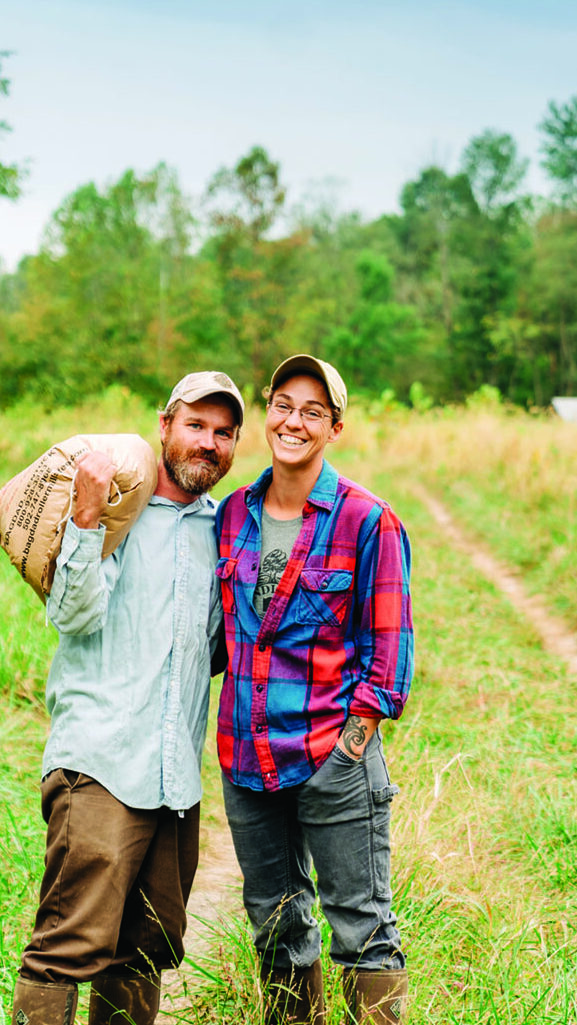
Developing ways to smoothly transition both farming assets and knowledge to new owners, and to prepare beginning farmers for the challenges they’ll face, is essential to reversing trends that threaten the role agriculture plays in maintaining vibrant communities. These trends include the low rate of young farmers entering the profession compared to those retiring, the shift toward farm consolidation, high costs of farmland and the loss of farmland to development.
The challenges of passing on the farm are often compounded when the transition is between unrelated parties. As fewer farm “children” choose to stay on the farm, young farmers without a farm to inherit can be desirable and successful transferees. At the same time, because the majority of new farmers didn’t grow up on a farm, they need access to a wide range of resources and professionals, including mentors and agricultural service providers, to help them manage their operation.
Farm Succession
Farm succession is a complex process involving the transfer of assets, income and management, and it typically includes retirement and estate planning. Farm succession is often considered synonymous with farm transfer and farm transition. In this bulletin, farm succession includes these other widely used terms.
Farm succession includes not only the transfer of assets but also the transfer of knowledge, skills, responsibilities and cultural values from one operator to the next. It’s a multi-faceted process that takes time because it encompasses all aspects of transitioning the business to new ownership while providing for a secure exit from farming for the current operator. For a succession to run smoothly and successfully, a retiring farmer needs knowledge, skills and counsel in a wide variety of important areas, including legal matters, business planning, taxes, communication and interpersonal dynamics. Fortunately, there are many resources available to help, from guides and workshops to transition specialists.
While Hansel and Sue Kern haven’t retired yet, in recent years they’ve gradually involved their children, Aaron and Rebecca, in their farming operations with an eye toward eventually completing the transition to retirement. Kern Family Farm, which the elder generation started in 1999 on land they bought from Hansel’s parents, is located in the Sierra foothills of California and includes 80 acres of terraced fields, orchards, hoop houses, pastures and woodlands.
After high school, Aaron and Rebecca joined the farm full time, and in 2010 the family began a gradual transition of roles that lasted four years. Aaron has taken over crew and production management from his father; Rebecca manages the on-farm store, marketing, finances and recordkeeping; Hansel remains as the maintenance manager and “the face” of the farm; and Sue holds an off-farm job as an attorney, helps at the store and is engaged in the local farming community.
In 2015 the family formed a limited liability corporation (LLC), a legal business structure that gives joint owners flexibility in gradually transferring farm assets from a senior generation to a junior generation. Forming the LLC allowed the Kerns to formalize the transition. Learn more with SARE’s Farmers’ Guide to Business Structures.

Interpersonal Dynamics
Farm succession can be particularly challenging because farmers tend to focus more on the legal and financial side of succession and ignore the often more difficult and stressful interpersonal issues that may be involved, either among members of their family or with business partners or an unrelated successor. Even when a farmer is transitioning the business to an unrelated party, members of their family are typically involved in the critical decisions. Interpersonal skills, such as good communication, listening and conflict resolution, are needed in all succession planning. For more, see “The Importance of Interpersonal Skills” in the Health and Wellbeing section.
For example, if parents are trying to pass the farm to one or more children, they may not fully account for the different lifestyle goals, farming values or sibling dynamics of the heirs. Or, families sometimes mistakenly assume that any differences among heirs will get resolved after the legal matters are arranged. Often, families avoid planning because they don’t want to deal with the conflicts that arise because of differences regarding goals, values and perceptions of fairness and equal treatment.
However, harmony and effective communication among involved family members and business partners are critical to successful farm succession. Strained relationships and passive communication (the “wait and see” approach) hinder effective succession. Resolving interpersonal issues as part of the succession process can help avoid serious problems for both generations. Consider seeking out professional counseling for assistance with communication-related challenges.
The Kern family’s transition of roles involved constant communication, according to Aaron Kern. “It never was an overnight transition,” he says. “Every day we’d check in with each other—do you still want to do this, I can do this, and so on.”
Consider the following strategies to help you and your family avoid similar pitfalls:
- Have frequent farm and/or family meetings. Meetings can allow all involved family members and partners to express their goals and expectations for the farm. Consider developing a meeting agenda to get started. If the task seems overwhelming, use an objective, third-party facilitator to help the meetings run smoothly. A third-party facilitator could be a consultant, Extension agent or even a trusted neighbor, clergy member or civic leader. Be sure that all participants have a chance to freely express their concerns and interests.
- Break things down step by step. Try approaching farm succession gradually, in concrete steps that will help break down the process into “digestible” chunks. Although there is no single way to enter into or exit from farming, a typical progression is to transfer farm labor responsibilities first and transfer management decision-making responsibilities second (e.g., first production decisions, followed by marketing decisions and then financial decisions). Knowing the business model and mapping it out with the next generation is an important part of transferring management. Transferring physical assets tends to come next: Begin with moveable assets such as equipment, machinery, livestock, etc., and finish with farm buildings and land. Finally, be sure to keep track of your steps or actions, no matter how small, to help you feel a sense of progress toward your succession goals.
- Focus on timely planning. Often, the business founder is unwilling to give up control of the operation in a timely manner. This “founder control issue” is common among family businesses of all types and sizes, not just farms, and it can function as a barrier to effective succession planning.
- Recognize different roles within the farm business and family. Participants involved in farm succession may have different priorities and goals that are influenced by their gender, age and roles within the family and the business. For example, researchers found differences in priorities based on gender: Men tended to view profit as a high priority, while women identified good family relations as a high priority. Different priorities may also exist between the senior and junior generations, and between farming and non-farming family members. Recognize and acknowledge these differences when they exist.
Stay positive. Studies have shown that the junior generation of farm families is particularly vulnerable to stress, which may influence their decision to not become farmers and may contribute to their premature exit from farming. Members of this population who are interested in continuing to farm should also focus on personal resilience strategies to manage stress as they plan their career and take appropriate steps that can help reduce stress (see the Health and Wellbeing section).
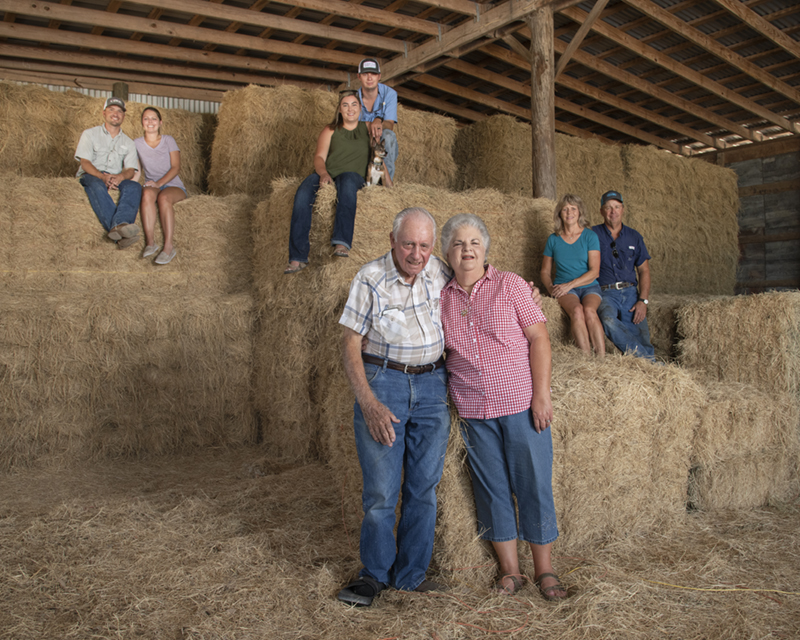
Focus on Readiness
One of the most important things both generations can do is focus on readiness. Even if older farmers want to see their farm pass successfully to a new owner, they are notorious for thinking they will never retire. This mindset can both delay and complicate the retirement and estate planning process, which are key to a smooth succession. Plus, farmers and ranchers think of retirement in different ways. Retirement doesn’t have to mean leaving the farm or stopping all farm work.
For the senior generation, as you begin planning, you must consider:
- What will you do in retirement?
- What will your expenses and source of income be?
- What kind of health coverage will you need and have?
Rarely is it too early to bring in professional help, such as lawyers, accountants, financial planners or others. Identify people who can help you evaluate your plan and then provide the necessary documents early so you have time to prepare and make informed decisions.
Also, recognize that letting go of control and farming identity is hard for most older farmers. Pay attention to differences in values and priorities among generations, and be willing to negotiate them. While senior generation farmers can pass on valuable wealth in knowledge, land and capital, they shouldn’t let tradition limit the next generation’s ability to innovate.
Beginning Farmer Development
Beginning farmers face multiple and specific challenges. For one, a survey by the National Young Farmers Coalition revealed that young farmers who grew up on a farm find that their cultural and family knowledge is the most helpful “program” for getting established. Yet 75% of young farmers are new to agriculture and don’t have past experience or family members as a resource available to them. They must learn not only how to raise crops and livestock but also all the aspects of how to run a business. This includes whole-farm-planning, market research, business planning, evaluating farm enterprises, land acquisition, financial recordkeeping and identifying key service providers who can offer support. In fact, lack of knowledge in one or more of these areas is often what leads to the financial failure of beginning farms.
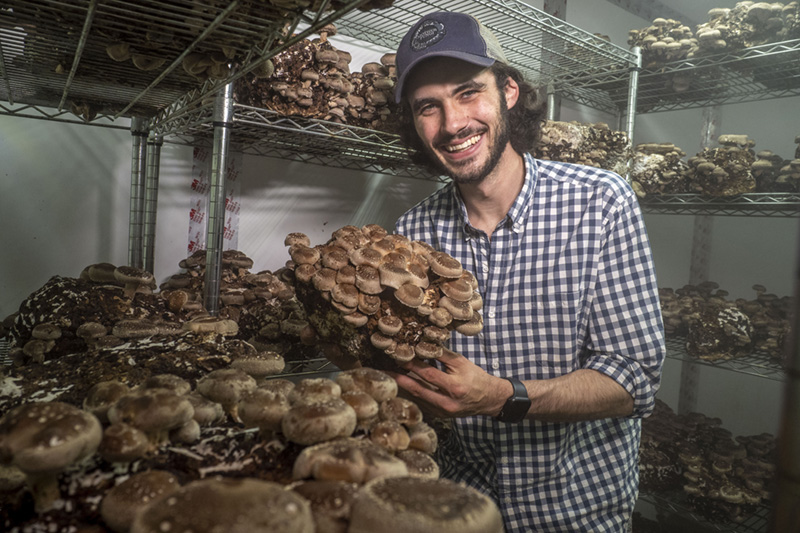
A SARE-funded project in Maine (ENE17-147) set out to address challenges that beginning farmers face by providing a series of workshops in which 64 potential or beginning farmers learned about and developed business plans, enterprise budgets, farm mission statements, soils maps, regulations and permitting research, financial recordkeeping systems and customer surveys.
Follow-up with farmers who participated in these consultations showed that up to 30% of participants used the workshops to conduct more research about their ideas before jumping in, develop more robust business management tools, complete their first enterprise budgets, develop business plans, conduct market research and make marketing plans.
Apprenticeship and mentoring programs can also help. The Dairy Grazing Apprenticeship, a nonprofit that includes a network of mentor graziers in 15 states, provides one such example. Some organizations, such as the Ohio Ecological Food and Farm Association and Kansas Rural Center, hold in-person “land and labor” mixers to connect landowners and land seekers within a specific geographic area. The National Young Farmers Coalition maintains a list of many programs at www.youngfarmers.org/serviceproviderdirectory. Local youth programs and agricultural educators may know of opportunities as well.

Reducing Isolation Through Peer Socializing
For many beginning farmers, life on the farm can be isolating. Beginning farmers may be working in a new area where they don’t know many people, or their neighbors might be spread far apart or may not understand their way of farming.
Finding ways to socialize or network, either in person or online, is important for overcoming isolation. Attending workshops or joining local agricultural organizations are some ways beginning farmers can meet other farmers and have opportunities to learn. Networking in farming communities can also provide financial benefits, where equipment sharing and cooperative marketing arrangements, etc. might arise.
Overcoming isolation was important to first generation farmers Genesis McKiernan-Allen and Eli Robb of Full Hand Farm in central Indiana. While Extension services existed in their state, they felt there was nothing geared specifically toward beginning farmers, and by their seventh year of farming, the couple felt isolated.
Suspecting that other beginning and young farmers might feel the same, McKiernan-Allen, who has a five-acre vegetable farm, used a SARE grant (FNC17-1089) to build community and comradery by creating a variety of different online and in-person spaces. These spaces allowed young and beginning farmers to engage with various communities that helped them find company and get answers to questions. She worked with like-minded farmers in her area to establish a local chapter of the Hoosier Young Farmers Coalition (HYFC) to provide a permanent structure for networking for new and young farmers.
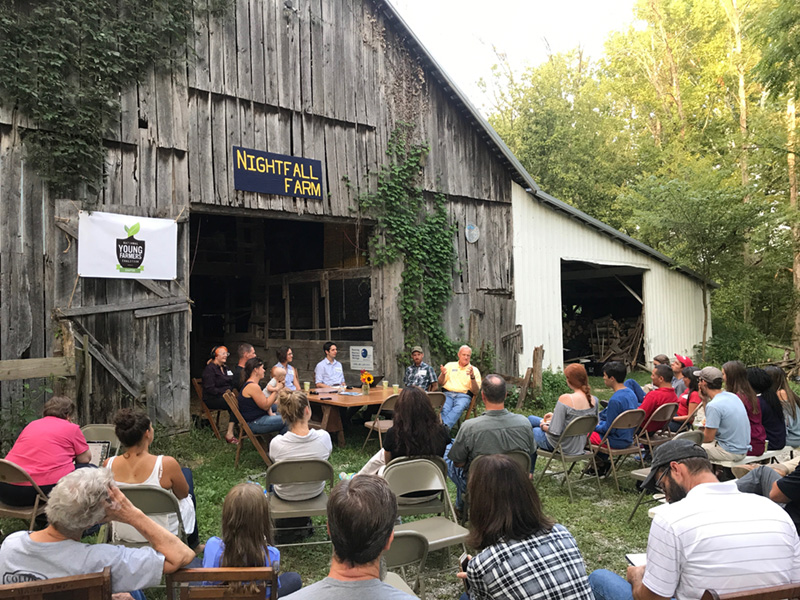
McKiernan-Allen and Robb’s suspicions that other new farmers were looking for connections proved to be correct, as attendance exceeded their expectations. In the first year, they organized almost 25 events and engaged with more than 800 Hoosier farmers. Over the course of two years, they hosted events, sponsored tables at area farm and food conferences, advocated for their needs during farm bill hearings, and created a website and social media accounts for HYFC. They also hosted five young farmer mixers, sent seven young farmers to meet with staffers at their U.S. senator’s office regarding the 2018 Farm Bill, distributed four e-newsletters, hosted tables at six farm/food conferences and added an Instagram account to their social media efforts.
Land Ownership and Tenure Options
Many incoming farmers and ranchers don’t get land directly from their own families. They have to rent or buy land in other ways. Many private, state and federal programs exist that can link new, landless farmers to retiring farmers and to non-farmers with available farmland. However, according to an Indiana University survey funded through a SARE grant (LNC16-377), these programs are limited partly because of an imbalance: For every farmer seeking a new owner, there are nearly 10 beginning farmers seeking land. Another discrepancy identified was the difference in what farm seekers want and what is offered.
Identify your short- and longer-term objectives when looking into how to access land and establish tenure on it (i.e., your means of holding onto the land). According to Farm Access Methods: A Decision Guide, published by Land For Good, the main categories of land tenure are ownership now, ownership in the future, no ownership (tenancy) and some combination of these. Important things to consider when making this decision include security (Under what conditions might I lose the land?), opportunities to build equity, and affordability. The guide outlines three broad strategies for how an individual farmer can make land acquisition more affordable:
- Decrease the cost of land (e.g., remove the development or other rights through an easement; choose a location with lower land values or that needs improvements; buy less land; or buy land with others)
- Increase your ability to bear the cost (e.g., increase farm profitability; increase off-farm income; or postpone the decision to buy)
- Lease (rent) land instead of buying it (among all manner of leasing models, the lease-to-own option may be available to achieve eventual ownership)
Depending on your resources and goals, a land transaction can vary in terms of the parties involved (e.g., a seller, a landlord, other farmers, investors, lenders, etc.), the legal arrangement made and the rights apportioned. See the Eye on Equity: Land Access section for a discussion of alternative tenure models, some of which leverage the greater community’s values and engagement in financing efforts.
The Next Generation of Ranch Managers and Land Stewards
More than one-third of the non-urban land in the United States, including both publicly and privately owned, is used for ranching. Although grazing has historically contributed significantly to vegetation change, soil erosion, exotic plant invasions and other negative ecological impacts, there is growing awareness of both the importance of grazing for rangelands and the need to adopt conservation management. At the same time, more of the ranchland going up for sale in the West is getting bought by non-ranching investors or landowners as opposed to by the next generation of ranchers. These new owners might want to maintain a ranching operation but lack the expertise to run a profitable operation that uses good stewardship practices. This points to a need for Western land-grant universities to focus on educating professional land managers who are well-trained in both natural resource management and the business of ranching, in order to help carry on ranching traditions while promoting land conservation.
Eye on Equity: Land Access
Land is many things to a farmer: the foundation of a livelihood, a source of wealth (if they own it), a source of identity and a connection to the earth. The dispossession of Native Americans and Black and Hispanic farmers of land is one of the sharpest edges of discrimination in the food system and a major contributor to today’s wealth gap. The shifting demographics of farmers, rising land costs and, especially in the South and on tribal lands, historic challenges faced by Black, Native American and Hispanic landowners, all have an influence on how land is accessed and preserved for agricultural uses. We can begin to improve equity in land access and succession by understanding the challenges and meeting the needs of beginning farmers and multigenerational farmers of color, and by recognizing the land-based values of our diverse farming cultures.
Diverse Priorities Around Land Tenure and Use
Farms are highly diverse. Along with the wide variety in terms of size and type of operation, farmers themselves are very diverse as people in age, race, ethnicity, religion, sexual and gender identity, and family makeup. With this variety comes a range of personal and cultural priorities that can influence a farmer’s approach to farm structure and succession. First-generation farmers, immigrant and refugee farmers, and women operators and landowners are examples of populations whose values and goals may lead them to manage their business differently from the mainstream.
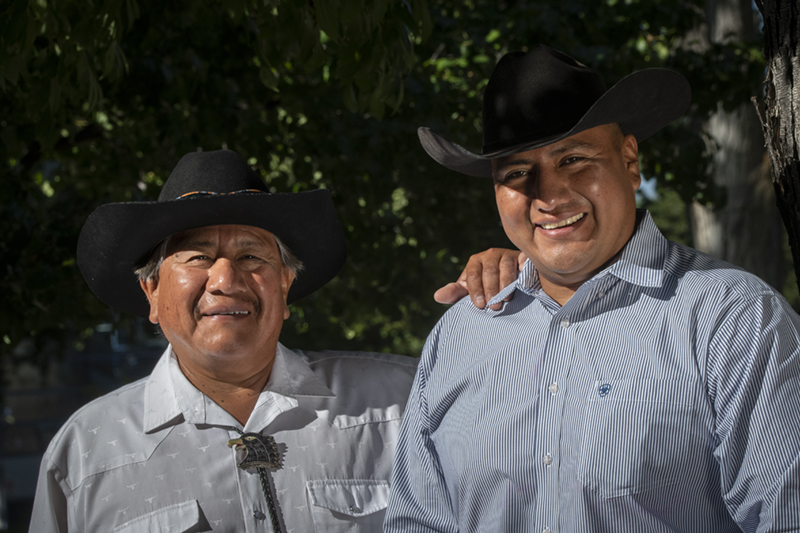
Some may seek out alternative arrangements to access and own land that align more closely with their personal values, such as community land trusts or shared ownership arrangements. (To explore shared ownership, see Land for Good’s guide Accessing Farmland Together: A Decision Tool for Farmers.) The percentage of farmers who are women is steadily growing, and surveys show they tend to emphasize sustainable principles and practices more so than their male peers. Sometimes female farmers are also linked more strongly to small-scale operations, direct marketing and value-added enterprises. Because of women’s increasing importance as operators and landowners, and because of their interest in sustainability, some organizations, such as American Farmland Trust and the Women, Food and Agriculture Network (WFAN), are making concerted efforts to reach them with information about conservation practices while encouraging their approaches towards sustainable agriculture.
“Farmland owners who rent out their land have tremendous sway in making agriculture more sustainable, but their power is going largely unused. One reason for this is that many of these non-operator landowners are women, who often feel at a disadvantage to their tenants or to their families. We want to change the narrative of women landowners being invisible to being active change agents who understand the sustainable agricultural practices needed on their land, and we want this new narrative to be led by women.”
WFAN Interim Executive Director Ahna Kruzic, who used a 2019 SARE grant (ONC19-059) to train women landowners to be sustainability ambassadors to their peers.
Heirs' Property and Fractionation
Heirs’ property and fractionation are two terms that capture a shared experience among Black land owners (heirs’ property) and Native Americans (fractionation). The term heirs’ property refers to land that has been passed down informally from generation to generation, usually because the owner has died without leaving behind a legally binding agreement that identifies specific heirs or an exact planning strategy for the land. When a piece of land becomes heirs’ property, it gets divided equally among all living descendants of that family, some of whom may live far away and have no knowledge of or interest in the property. One heir might choose to stay on the land to carry on a farming business, but no one on the agreement actually has a clear title to the property to reflect their ownership. Additionally, although all of the heirs have a shared right to the property, they may have different interests or priorities for its use. When these types of disagreements happen, it can quickly feel impossible for the family members who are farming to access capital from a lender, use government programs or make other important land use decisions. Given its lack of clear ownership rights and high potential for family disagreements, heirs’ property is more vulnerable to ownership loss and subsequent development.
Historically, this heirs’ property designation has fallen largely on Black-owned land, and it has been identified as one of the primary reasons that Black-owned land has decreased by 80–85% in the last century. It is estimated that today, one third of all Black-owned land in the South falls into this category of heirs’ property.
Similarly, fractionation began soon after the General Allotment Act of 1887, which attempted to impose white concepts of individual land ownership and management on Native American tribes by dividing up reservation lands and allotting them as parcels to individual tribal members. When the owner died, their parcel was left intact but ownership interests were divided equally among their heirs. Many generations later, a single parcel of land can have hundreds or thousands of owners, which, among other problems, complicates the ability of tribes to economically develop their lands or improve infrastructure. Cobell v. Salazar, one of the largest class action settlements in U.S. history that addressed federal mismanagement of land stemming from the General Allotment Act, included a $2 billion program in which the federal government would buy back fractionated land and return it to reservations. Fractionation still affects approximately 30% of tribal lands in the Great Plains and Rocky Mountains regions.
Many of the solutions to these problems need to occur at the level of state and federal law; for example, in 2021 the Federal Emergency Management Agency (FEMA) dropped its long-standing requirement that disaster aid applicants provide documentation of land ownership because it was preventing many Black families from accessing aid. At the individual level, this challenge reinforces the utmost importance of having a legally binding will in place that allows one generation to formally pass land onto the next, or a formal plan to gift land back to a tribe. In the South, many legal organizations provide mediation and legal services to property owners who are facing challenges related to heirs’ property, such as the members of the Heirs’ Property Retention Coalition. The USDA offers assistance with heirs’ property issues at www.farmers.gov/working-with-us/heirs-property-eligibility.
Alternative Tenure Models
For all the challenges that beginning farmers face, the number one barrier to success is access to affordable land, according to a 2017 survey by the National Young Farmers Coalition. A related constraint identified by the Indiana University survey was a shortfall of on-farm housing. Approximately 75% of farmers and ranchers live on their land, so housing is a critical part of the land-access equation and often the most expensive piece.
There are many approaches that can be viewed as realistic alternatives if acquiring land via a conventional short-term lease or private financing will not work for you. Many of these approaches leverage partnerships with values-based investors, organizations, other farmers, private individuals and local/state/federal entities that are willing to financially support conservation agriculture in their communities. Land access options will vary depending on the level of ownership you seek and the partners or parties you work with. These can include:
Alternative financing. The USDA Farm Service Agency (FSA) has ownership, operating and microloan options that are targeted to beginning farmers, women and farmers of color. Community development financial institutions (CDFIs) are private financial institutions that are mission driven and provide lending to less advantaged individuals and communities. Some, like California Farm Link, provide agricultural loans. In addition, there’s an emerging trend in crowdsourced funding. In one case, this means using an online platform (some of which specialize in farmland) that pools investment capital for real estate mortgages. In another, it can mean donation-based crowdfunding (not tax deductible), such as asking CSA members for contributions to purchase land or equipment.
Shared ownership. On the surface, forming a limited liability company (LLC) or a corporation might not sound like the solution for you, but these are legal ways to structure your farm operation and pull in multiple investors who share ownership of the assets, including the land. These investors can be other farmers, family members or passive investment partners. Hannah Breckbill and Emily Fagan used this approach to buy eight acres of land in Decorah, Iowa, for their farm, Humble Hands Harvest, which they had previously operated on rented land. Out of environmental concerns, a group of Decorah residents formed an LLC in 2014 to buy a local piece of land in order to prevent it from being sold at auction and turned into a large hog operation. Breckbill, an early investor in the LLC, eventually bought a portion of the land at a discount and moved her farm there, which was an attractive option to the other investors because she and Fagan apply regenerative farming practices to their land.
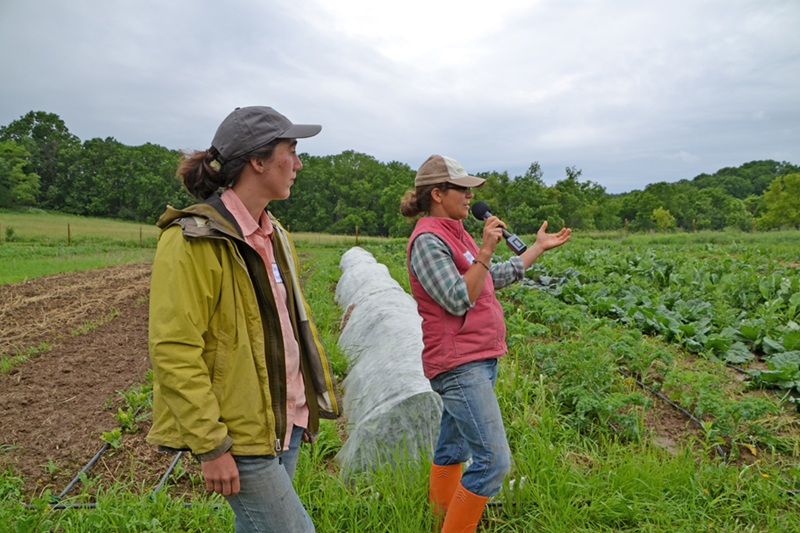
Cooperatives can also be used to acquire land and make it available to its members. In each of these cases, much planning and work needs to go into both establishing rules for how the legal entity will function and in maintaining its legal status. They also have different considerations as far as taxation, liability and asset sharing. Learn more by reading the SARE publication Farmers' Guide to Business Structures.
Partial ownership. There are a few different arrangements possible that share a common principle: The farmer holds some rights and interests in a piece of land, and another party holds other rights. Easements are a common example, where a government institution or land conservancy pays a landowner in exchange for certain rights on how the land can be used. Farmland with an agricultural conservation easement on it will be more affordable to a new farmer because it no longer has development value. Or, a beginning farmer might negotiate with a conservation land trust to acquire an unprotected property, where the trust first buys the property, then places an easement on it and finally sells it to the farmer at its lower value. Another emerging concept is a ground lease, where one entity that owns the land (usually a conservation land trust or other similar entity) provides a long-term lease to a farmer tenant. The farmer has the option to buy existing structures or to build new ones, which they would then own and which would provide a source of equity.
Tenancy. As more agricultural land changes hands, and as communities and institutions place increasing value on preserving rural places, the variety of potential landlords is likewise increasing. These can include non-farming spouses or children of a deceased farmer, distant city dwellers who own investment properties, land trusts and conservation organizations, municipalities that hold conservation lands, churches or religious orders, intentional communities, conservation-based nonprofits, CSA members who own land, and schools and universities. Oftentimes, landlords such as these will be guided by a conservation ethic and might therefore be willing to negotiate more favorable terms out of a desire to support local food systems and to see their land farmed sustainably.
For more information, consult Land for Good’s guide Farm Access Methods: A Decision Guide.
Farming and Ranching on Public Land
Public properties held by local, state and federal entities are another way new farmers and ranchers can access affordable farmland and build community connections. Municipalities, states and federal agencies are often willing to make certain land available for agriculture because they recognize the economic, environmental and community benefits that arise when land is farmed or grazed sustainably.
There’s no single approach or model for how to go about accessing public land, and it comes with its own set of challenges. The leasing or permitting process is different than with private land (it may involve a formal bidding process), and it usually takes more time and interpersonal skills to navigate the many agencies within a municipal or state government that will be involved in renting out and overseeing the land.
Resources
We present only a few examples of the many organizations that provide valuable resources and support on the topics presented in this publication. Most of the ones listed here work at a regional or national level. Consult with other farmers and educators to identify useful resources at the local and state level.
American Farmland Trust
www.farmland.org
Farm Commons
www.farmcommons.org
Land for Good
www.landforgood.org
National Young Farmers Coalition
www.nyfc.org
USDA’s Beginning Farmers and Ranchers portal
www.farmers.gov/your-business/beginning-farmers
